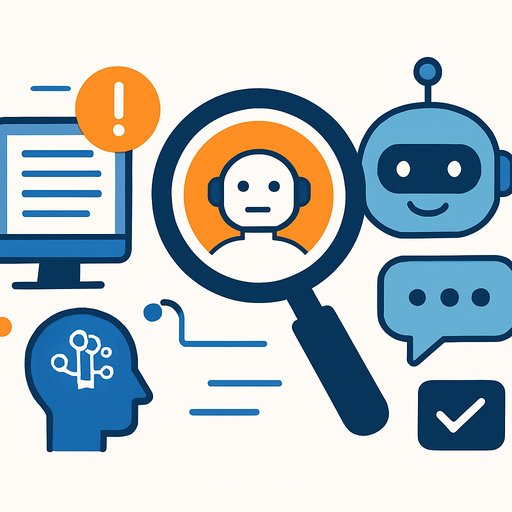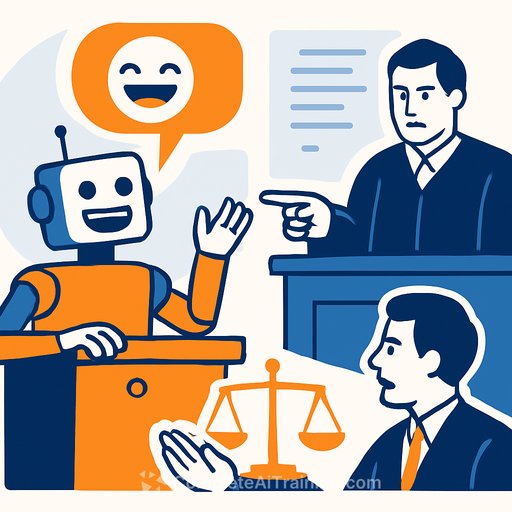AI content detectors in 2025: what actually works for writers
AI-written text is everywhere. That means more pitches, assignments, and drafts are getting flagged - sometimes fairly, sometimes not. I spent this year testing AI content detectors and a handful of chatbots to see what's reliable, what's noise, and what writers should do about it.
Here's the bottom line: a few tools are solid, many are inconsistent, and chatbots might be the better option.
Key takeaways
- Using AI for your writing without attribution is plagiarism. If AI helps, say so. Definition source: Merriam-Webster.
- Standalone AI detectors are a mixed bag. Some are great, many aren't, and performance changes over time.
- Chatbots often detect AI better than detectors. In tests, leading chatbots matched or beat dedicated tools.
- Don't rely on one tool. Cross-check, use judgment, and document your process.
How the tests were run
Five text blocks. Two human-written, three AI-written (ChatGPT). Each block was tested individually across multiple detectors and chatbots.
Scoring was simple: if a detector gave a clear call, it passed or failed that block. If a tool gave a probability score, anything above 70% (toward human or AI) counted as its decision.
Some tools added friction. One detector limited input to 250 words unless you upgraded, so it was dropped. A newcomer was added in its place.
Overall results: content detectors
Performance peaked earlier this year. Now, only three detectors hit perfect scores. A few previously strong tools slipped - right around the time they tightened free usage.
Accuracy also varied by writing style. One tool marked clean, human-written text as AI. Another refused to commit. Consistency isn't the norm.
Recommendation: Use detectors for signals, not verdicts.
Detectors and accuracy (5 tests total)
- Pangram - 100% New entrant. Slow-ish to process, but nailed every test.
- QuillBot - 100% Previously inconsistent; now steady and correct across the board.
- ZeroGPT - 100% Matured into a clean SaaS experience and held accuracy.
- Copyleaks - 80% Called a human-written sample 100% AI. Claims of "most accurate" don't hold up here.
- GPTZero - 80% Improving as a product, but results shifted between runs.
- Originality.ai - 80% Marked a human-written sample as 100% AI this time.
- GPT-2 Output Detector - 60% Likely outdated. No real improvement.
- BrandWell - 40% Misread multiple AI-written samples as human.
- Grammarly - 40% No progress from prior tests. Missed clear AI text.
- Writer.com - 40% Labeled everything as human.
- Undetectable.ai - 20% The steepest drop. Mostly wrong on AI text.
Overall results: AI chatbots
Surprise: chatbots outperformed most detectors. With one exception, they delivered cleaner, more consistent calls.
- ChatGPT Plus - Perfect
- Microsoft Copilot - Perfect
- Google Gemini - Perfect
- ChatGPT (free tier) - 4/5 correct Misread one human sample and even identified the original writer by name in another case.
- Grok - 2/5 correct Treated almost everything as human.
Why this matters: If you already use a major chatbot, you may not need a separate detector. Ask it to classify a passage and explain its reasoning.
How each tool behaved (quick notes)
- Pangram: Accurate and focused on detection. Limited free scans per day.
- QuillBot: Stable and correct in repeat tests after past inconsistency.
- ZeroGPT: Clear UI, steady accuracy.
- Copyleaks: Enterprise-friendly, but not flawless; flagged human work as AI.
- GPTZero: Actively developed; accuracy still fluctuates.
- Originality.ai: Credits-based pricing; miscalled a human sample.
- GPT-2 Detector: Feels dated; middling results.
- BrandWell: Struggled with AI-written text.
- Grammarly: Strong at grammar; weak at AI detection.
- Writer.com: Overly conservative; called everything human.
- Undetectable.ai: Detector performance fell hard.
What writers should do right now
- Be explicit about AI use. If an AI tool drafted or edited, disclose it. See the definition of plagiarism here: Merriam-Webster.
- Cross-check. If a detector flags your work, run it through two more tools (ideally a detector and a chatbot) and save screenshots.
- Add provenance. Keep notes on sources, drafts, and edits. If asked, you can show your process.
- Write like you. Your voice, examples, and reporting details reduce false positives and make better work.
- Set expectations with clients. Agree on acceptable AI use and which verification methods they trust.
Recommended workflow for checking a draft
- Step 1: Run your text through a top detector (Pangram, QuillBot, or ZeroGPT).
- Step 2: Ask a leading chatbot (ChatGPT Plus, Copilot, or Gemini) to classify the text and explain why.
- Step 3: If there's a conflict, revise for clarity and specificity, cite sources, and recheck.
- Step 4: Document results for editors or clients.
Final thought: Is it human, or is it AI?
Detection is improving in bursts and backsliding in between. Treat these tools like spellcheck: useful, but not a judge. Your name is on the work - protect it with clear attribution, a repeatable process, and tools that have actually been tested.
Further learning for writers
Your membership also unlocks:






